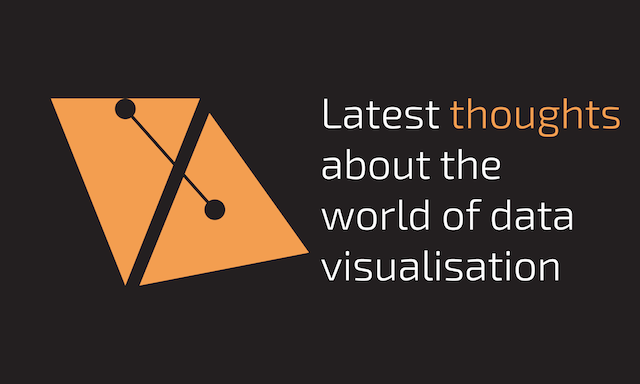This is a final guest post from Jon Schwabish, an economist and data visualization creator, who has been keeping everybody up to date with the daily goings on at VisWeek. I would like to thank Jon so much for his thorough, enlightening and (from my perspective at least) particularly punctual updates! I really appreciate how hard it is to find the time, energy and will to do this on a daily basis at such a all-consuming event like this. You can reach him at jschwabi@yahoo.com or by following him on Twitter @jschwabish.
I’ll call this post “Final Thoughts”. I left Visweek yesterday after the morning sessions, which were both great—an inspiring and beautiful couple of hours in the Artists Meet Visualization session and a practical (and also inspirational) tour with some data visualization practitioners in the Takes from the Trenches session. In this final post, I give you my final thoughts on Visweek from my perspective as a relative outsider to the field. And please get in touch with me if you think I left something out, think I hit it on the head, or think I’m totally wrong and should stick to attending economics conferences from here on out.
The Good
- First, I think the conference organizers did a great job having what I thought were fairly long breaks (about 20 minutes) between sessions. Those breaks allow people to discuss what they’ve just seen and talk with other people in the field.
- Second, the Fast Forward sessions were great—entertaining, quick, lively, and engaging. I wish more conferences that I attend would put on similar events.
- Third, the people and the energy at Visweek were terrific. (Remember, I spend a lot of time at economics conferences, so it really doesn’t take much for me to be impressed on this front.) Even though I’m not an academic data visualization researcher or a full-time data visualization practitioner, I was excited to find so many engaged, interesting people ready to discuss the merits of different types of data visualization, different tools to use (and how to use them), how and why to choose certain visualizations, and so many other aspects of presenting data and information.
The Bad
- First, the internet connection was pretty weak and there was a shortage of places to charge devices. Organizers may want to take a more strategic approach to providing places to power up.
- Second, I find the organization of the conference is a bit confusing. From discussions with some experienced attendees, it appears that Visweek started as single conference (maybe BioVis?) and then over time added other conferences to it, each of which is organized separately. I initially found it hard to navigate the website and to determine the differences between SciVis, InfoVis, BioVis, etc. I’m aware that Visweek is put together by an outstanding team of volunteers, but I would urge the organizers to consider whether it is worth formally pulling everything together under one umbrella or working to make the distinctions clearer.
- Third, I want to just reiterate a point I made in my Day 2 summary—the number of observations in many of the experiments presented at Visweek is very small. I discussed my Day 2 post with a few people at the conference and I heard two main reactions: one, it is difficult to get more participants in these experiments (and cost is certainly be a factor); and second, small sample sizes are characteristic of other fields, such as sociology and psychology, so the practice is not uncommon. And I get those two points and agree, but I do think that if the data visualization field is to determine the best ways to communicate data and information, sample sizes are going to have to get bigger and be more representative in order to perform truly reliable statistical analyses.
The Ugly
I lost count of how many presentations I saw over the last few days, but I was struck by the poor slide and presentation design of so many speakers. Even if you’re a computer scientist studying different algorithm design or a researcher working on different visualization perception issues, Visweek is, at its heart, a conference on visualizing data and, as such, I was really disappointed at the overall quality of the slides. Specifically, I’d like to see fewer bullet points, larger text, more and better images, more narratives, and fewer cute slide transitions. (Some people told me they’d like to cut down on the number of equations—I’m not turned off by equations, but I do want to hear some discussion and intuition for the math, instead of presenters thinking that the Greek letters are going to do the job for them.)
In the Evening
I survived my first Visweek! I had a tremendous time and was fortunate to meet so many excellent researchers, graduate students, practitioners, computer scientists, programmers, and graphic designers. Thanks to Andy for letting me invade his site for a few days and special thanks to a whole bunch of folks for inviting me into their world and helping me navigate the waters, if only for a few days: Enrico Bertini, Jerome Cukier, Ellie Fields, Danyel Fisher, Jeff Heer, Noah Iliinsky, Robert Kosara, Jen Lowe, Kevin Lynagh, Scott Murray, Hannah Pileggi, Kim Reese, Jonathan Roberts, and Drew Skau. If you’re not familiar with the work of these folks—and apologies to those I omitted—I recommend you go find them (and go bother them for help and advice!).
So I’m now back east where football is on at a decent hour and there are fewer coffee shops per capita. I’m filled with renewed inspiration to make better and innovative visualizations, and to figure out better ways to communicate information because I believe that communicating data through quality data visualizations can lead to better understanding of complex issues, which will hopefully help us tackle some of the important questions we are all trying to answer.

